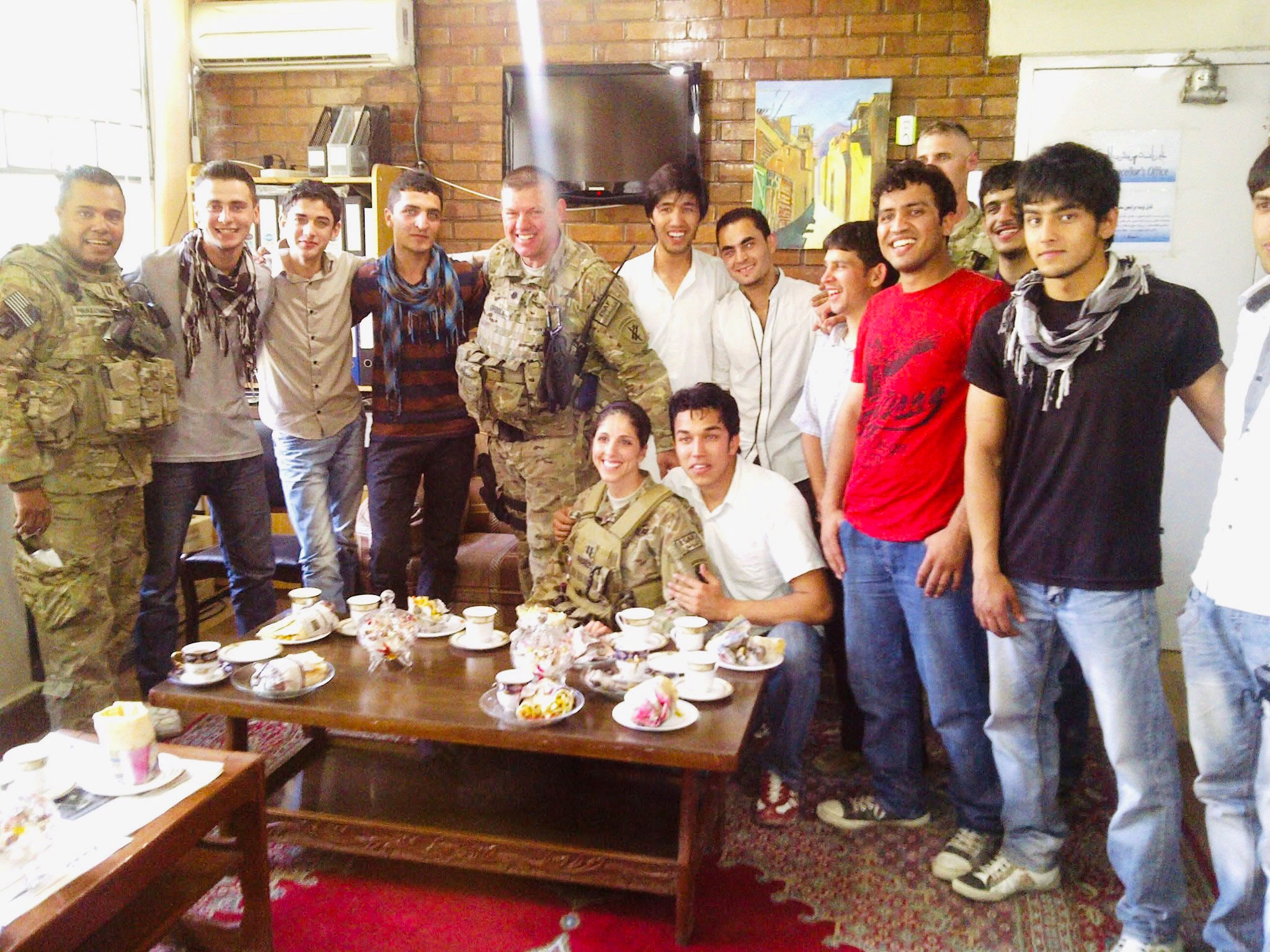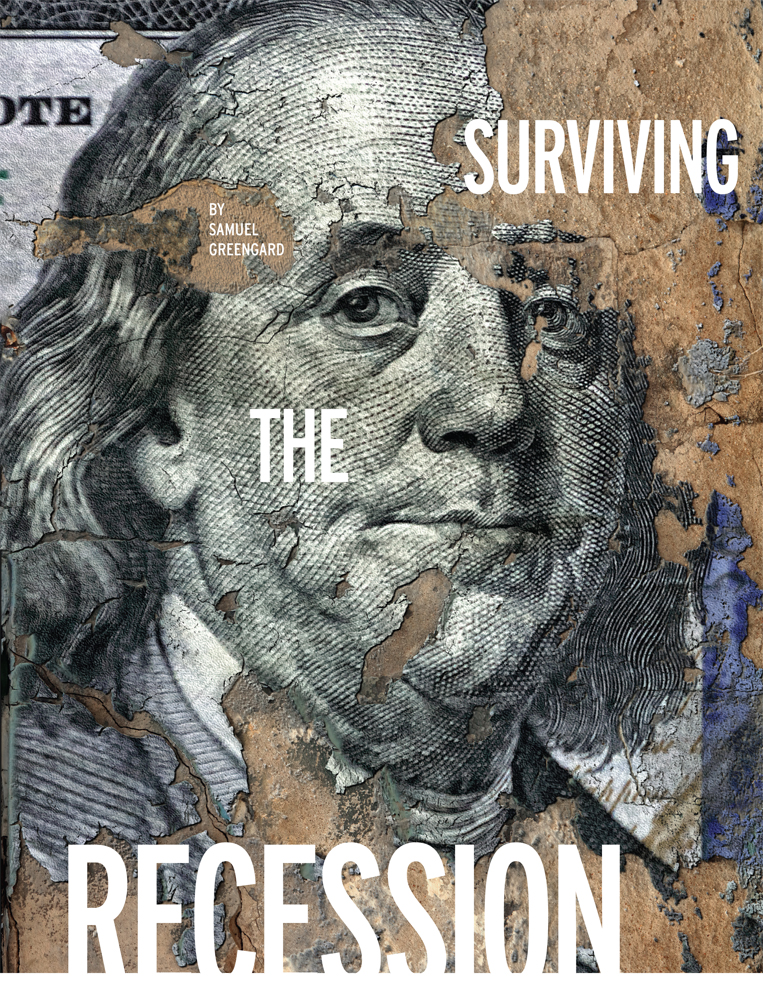Report on Gender-Based Violence and its Obstruction of Sustainable Development Goals
Introduction: Intimate Partner Violence as a Barrier to Sustainable Development
Intimate Partner Violence (IPV) represents a significant global human rights violation and a formidable obstacle to the achievement of the 2030 Agenda for Sustainable Development. This report analyzes the multifaceted nature of IPV, with a specific focus on the vulnerabilities of Latina immigrants in the United States. The issue directly contravenes the objectives of several Sustainable Development Goals (SDGs), most notably SDG 5 (Gender Equality), but also critically impacts SDG 3 (Good Health and Well-being), SDG 10 (Reduced Inequalities), and SDG 16 (Peace, Justice and Strong Institutions).
The Nature of IPV and its Impact on Health and Equality (SDG 3 & SDG 5)
Gender-based violence, a core target for elimination under SDG 5.2, manifests in various forms, including psychological, emotional, and physical abuse. The consequences severely undermine the health and well-being of survivors and their families, directly conflicting with the aims of SDG 3.
Case Study: Psychological Abuse and Generational Trauma
The case of a Mexican immigrant in New York, referred to as Mariana, illustrates the insidious nature of non-physical abuse. Her partner, a successful professional, subjects her to frequent outbursts of anger, verbal aggression, and property destruction. These episodes, witnessed by their five-year-old child, create an environment of fear and instability, threatening the child’s long-term mental health and perpetuating a cycle of trauma. Mariana’s situation, where she feels trapped and her self-worth eroded, highlights how psychological abuse is a profound violation of SDG 3.4, which aims to promote mental health and well-being.
The Cycle of Domestic Violence
The persistence of victims in abusive relationships is often explained by the Cycle of Domestic Violence, a model developed by Dr. Lenore E. Walker. Understanding this cycle is crucial for interventions aimed at achieving SDG 5.
- Tension Building: The abuser exhibits moodiness and control, creating a climate of fear where the victim feels responsible for preventing conflict.
- The Abuse Incident: A violent outburst occurs, involving verbal, emotional, or physical harm. This is the most acute phase of the cycle.
- Reconciliation/Honeymoon Phase: The abuser apologizes, makes promises, and uses manipulation to regain the victim’s trust, reinforcing the emotional bond.
- Calm: A period of peace ensues, giving the victim hope for lasting change before tension begins to build again.
Psychologist Irina Faneite, founder of the Corazones of Courage Foundation, notes, “You get caught in the cycle… You start to feel you deserve it, like [violence] is your fault. Your self-esteem starts to deteriorate, and then the abuse has no boundaries.” This psychological deterioration is a key barrier to a woman’s empowerment and equality.
Systemic Barriers for Latina Survivors (SDG 10 & SDG 16)
Latina immigrant survivors face compounded vulnerabilities that exacerbate inequalities and obstruct their access to justice, undermining the principles of SDG 10 and SDG 16.
Socio-Cultural Factors
Cultural frameworks rooted in machismo contribute to a social acceptance of male-driven aggression. Phenomena such as familismo (prioritizing family cohesion) and marianismo (idealizing female self-sacrifice) pressure women to endure abuse silently to maintain the family unit, directly hindering progress on gender equality targets within SDG 5.
Institutional and Legal Vulnerabilities
Access to justice, a cornerstone of SDG 16, is often denied to immigrant survivors due to systemic barriers that reinforce their inequality (SDG 10).
- Immigration Status: Abusers frequently use a victim’s precarious immigration status as a tool for control. Mariana’s case exemplifies this, as her U.S. visa is entirely dependent on her husband.
- Fear of Authorities: Many undocumented survivors fear that contacting police or social services will lead to deportation, a fear exploited by abusers.
- Access to Services: A survey by Esperanza United found 14% of foreign-born Latinas had difficulty accessing IPV services due to immigration issues. Other barriers include lack of health insurance, distrust of providers, and fear of discrimination.
- Statistical Disparity: The CDC estimates that approximately 42% of Latinas experience IPV. Reoccurrence rates are as high as 59% for Latinx couples, compared to 37% for White couples, indicating a significant inequality in outcomes.
Pathways to Justice and Empowerment (SDG 8, SDG 16, SDG 17)
Despite significant barriers, pathways to safety and justice exist through legal frameworks and multi-sectoral collaboration, reflecting the spirit of SDG 16 and SDG 17 (Partnerships for the Goals). Empowerment enables survivors to achieve economic independence, a key component of SDG 8 (Decent Work and Economic Growth).
Case Study: Overcoming Compounded Adversity
The story of Alicia Martinez, a Mexican immigrant, demonstrates a journey from extreme vulnerability to empowerment. After being trafficked into the U.S. and subjected to severe abuse by her first partner, she later faced physical, psychological, and economic violence from a second partner. Determined to secure her safety and independence, she sought legal recourse.
The Role of Legal Frameworks and Support Organizations
The Violence Against Women Act (VAWA) is a critical legal tool that aligns with SDG 16.3 (promote the rule of law and ensure equal access to justice). VAWA allows survivors of abuse to self-petition for legal status without their abuser’s involvement. Alicia utilized this provision with the help of Mil Mujeres, a non-profit organization providing legal and comprehensive support to immigrant women. This support was instrumental in her becoming a legal resident and rebuilding her life, empowering her to pursue economic stability in line with SDG 8.
Building Partnerships for the Goals (SDG 17)
The success of organizations like Mil Mujeres and Corazones of Courage hinges on effective partnerships, a core principle of SDG 17. Johanna Fonseca, CEO of Mil Mujeres, emphasizes a comprehensive approach built on collaboration.
- Network Building: Mil Mujeres works with other organizations to provide shelter, therapy, English classes, and job assistance.
- Inter-Agency Collaboration: The organization partners with police departments, public agencies, and consulates to ensure victim safety and access to resources.
- Culturally Competent Support: With a staff that is 90% Latinx, the organization provides an empathetic and safe space, which is the first step toward empowerment.
Conclusion: A Call to Action for Achieving the SDGs
Eliminating gender-based violence is not only a moral imperative but a prerequisite for achieving the 2030 Agenda. As Johanna Fonseca states, survivors must be encouraged to “dare break the silence… if you are afraid, do it afraid.” The stories of survivors and the work of support organizations demonstrate that progress is possible. Fulfilling the promise of the Sustainable Development Goals requires a concerted effort to dismantle the systemic barriers that perpetuate violence, strengthen legal protections, and foster robust partnerships that provide survivors with the comprehensive support needed to reclaim their health, safety, and autonomy. By doing so, we can build the peaceful, just, and inclusive societies envisioned by the SDGs.
1. Which SDGs are addressed or connected to the issues highlighted in the article?
- SDG 3: Good Health and Well-being: The article discusses the severe psychological and emotional trauma experienced by victims of domestic violence, as well as barriers to accessing mental and physical health services.
- SDG 5: Gender Equality: This is the central SDG, as the article focuses on gender-based violence against women, particularly domestic violence, and the underlying cultural norms like machismo that perpetuate it.
- SDG 16: Peace, Justice and Strong Institutions: The article highlights issues of violence, human trafficking, and the significant barriers immigrant women face in accessing justice, legal services, and protection due to their immigration status.
- SDG 17: Partnerships for the Goals: The article emphasizes the crucial role of non-profit organizations, their partnerships with other entities (like consulates and police), and community support networks in helping survivors.
2. What specific targets under those SDGs can be identified based on the article’s content?
-
SDG 3: Good Health and Well-being
- Target 3.4: By 2030, reduce by one-third premature mortality from non-communicable diseases through prevention and treatment and promote mental health and well-being.
Explanation: The article extensively details the mental health toll on victims. Mariana’s story describes her taking “psychological therapy to navigate his sudden — and constant — outbursts of anger.” The psychologist Irina Faneite explains how abuse leads to a deterioration of self-esteem, and Alicia Martinez was “coerced into taking antidepressants without proper medical supervision.” - Target 3.8: Achieve universal health coverage, including financial risk protection, access to quality essential health-care services and access to safe, effective, quality and affordable essential medicines and vaccines for all.
Explanation: The article points to a lack of access to services. It cites a study where “only 37% of Latina IPV survivors sought medical help” and notes that factors like “lack of health care insurance, distrust of providers, historical and ongoing racism and trauma, fear of discrimination” are significant barriers.
- Target 3.4: By 2030, reduce by one-third premature mortality from non-communicable diseases through prevention and treatment and promote mental health and well-being.
-
SDG 5: Gender Equality
- Target 5.1: End all forms of discrimination against all women and girls everywhere.
Explanation: The article identifies cultural discrimination as a root cause of violence, noting “an unresolved social and cultural framework of male-driven violence rooted in prevailing machismo” and how cultural phenomena like familismo and marianismo “pressure survivors to stay silent.” - Target 5.2: Eliminate all forms of violence against all women and girls in the public and private spheres, including trafficking and sexual and other types of exploitation.
Explanation: This is the core focus of the article. It details psychological violence (Mariana’s husband’s outbursts), physical violence (Alicia’s second husband “assaulted her physically”), and human trafficking (Alicia realized “she had been trafficked for sexual purposes”).
- Target 5.1: End all forms of discrimination against all women and girls everywhere.
-
SDG 16: Peace, Justice and Strong Institutions
- Target 16.1: Significantly reduce all forms of violence and related death rates everywhere.
Explanation: The article is a case study of efforts to reduce domestic violence. Alicia Martinez’s statement, “I’m grateful to be alive to tell my story. Others don’t survive,” directly speaks to the life-threatening nature of this violence. - Target 16.2: End abuse, exploitation, trafficking and all forms of violence against and torture of children.
Explanation: The impact on children is explicitly mentioned. Mariana’s 5-year-old child witnessed his father’s violent outburst, leaving him with “terror in her child’s eyes.” Alicia’s story is a direct account of being “trafficked for sexual purposes.” - Target 16.3: Promote the rule of law at the national and international levels and ensure equal access to justice for all.
Explanation: The article details how immigrant status is a major barrier to justice. Mariana feels trapped because “her U.S. visa is entirely tied to his work status.” It also mentions that survivors fear calling the police “for fear of deportation” and that some were “denied services due to a lack of proper identification.” The role of the Violence Against Women Act (VAWA) is highlighted as a legal tool to provide justice. - Target 16.9: By 2030, provide legal identity for all, including birth registration.
Explanation: The struggle for legal identity is central to the survivors’ stories. Abusers use immigration status as a control tactic. Alicia’s fight involved a “self-petition for a green card under VAWA” to gain legal status independent of her abuser, which she eventually achieved.
- Target 16.1: Significantly reduce all forms of violence and related death rates everywhere.
-
SDG 17: Partnerships for the Goals
- Target 17.17: Encourage and promote effective public, public-private and civil society partnerships, building on the experience and resourcing strategies of partnerships.
Explanation: The article showcases the work of civil society organizations like Corazones of Courage Foundation and Mil Mujeres. It explicitly mentions Mil Mujeres’ strategy to “work on strengthening networks and building partnerships with other organizations” and collaborating with “police departments and public agencies.” Alicia’s case received support from both Mil Mujeres and the “Mexican Consulate in California.”
- Target 17.17: Encourage and promote effective public, public-private and civil society partnerships, building on the experience and resourcing strategies of partnerships.
3. Are there any indicators mentioned or implied in the article that can be used to measure progress towards the identified targets?
-
SDG 3: Good Health and Well-being
- Indicator for Target 3.4 & 3.8: Proportion of the population seeking mental and physical health services.
Evidence: The article provides statistics that can serve as a baseline: “only 37% of Latina IPV survivors sought medical help… and just 14% social services.” It also notes that “Latina and Black women were less likely to seek mental health services compared to White women.”
- Indicator for Target 3.4 & 3.8: Proportion of the population seeking mental and physical health services.
-
SDG 5: Gender Equality
- Indicator for Target 5.2: Proportion of ever-partnered women and girls subjected to physical, sexual or psychological violence by a current or former intimate partner.
Evidence: The article cites several statistics measuring this: “approximately 1 in 3 Latinas (34%) will experience intimate partner violence (IPV) in her lifetime” (Esperanza United) and “about 42% of Latinas (7.6 million) have experienced sexual violence, physical violence, and/or stalking by an intimate partner” (CDC). It also gives a rate of reoccurrence: “as high as 59% for Latinx couples.”
- Indicator for Target 5.2: Proportion of ever-partnered women and girls subjected to physical, sexual or psychological violence by a current or former intimate partner.
-
SDG 16: Peace, Justice and Strong Institutions
- Indicator for Target 16.2: Number of victims of human trafficking per 100,000 population.
Evidence: While no broad statistic is given, Alicia Martinez’s detailed story of being “trafficked for sexual purposes” serves as a qualitative case-study indicator of this problem. - Indicator for Target 16.3: Proportion of the population who have experienced a dispute and who accessed a formal or informal dispute resolution mechanism.
Evidence: The article provides data on the lack of access: “14% experienced difficulties accessing intimate partner violence (IPV) services because of immigration-related issues.” Conversely, it provides data on access through support systems: Mil Mujeres “filed almost 4,000 cases at USCIS” in one year.
- Indicator for Target 16.2: Number of victims of human trafficking per 100,000 population.
-
SDG 17: Partnerships for the Goals
- Indicator for Target 17.17: Number and type of partnerships between public, private, and civil society organizations.
Evidence: The article provides qualitative evidence of these partnerships. Mil Mujeres is described as working with “other organizations,” “police departments,” “public agencies,” and the “Mexican Consulate in California” to provide comprehensive support to survivors.
- Indicator for Target 17.17: Number and type of partnerships between public, private, and civil society organizations.
4. Table of SDGs, Targets, and Indicators
| SDGs | Targets | Indicators |
|---|---|---|
| SDG 3: Good Health and Well-being | 3.4: Promote mental health and well-being. 3.8: Achieve universal health coverage and access to quality essential health-care services. |
– Percentage of IPV survivors seeking help (Article: 37% of Latina survivors sought medical help, 14% social services). – Qualitative accounts of psychological trauma and need for therapy (Mariana’s story). |
| SDG 5: Gender Equality | 5.1: End all forms of discrimination against all women and girls. 5.2: Eliminate all forms of violence against women and girls, including trafficking. |
– Prevalence of intimate partner violence (Article: 1 in 3, or 34%, of Latinas experience IPV; 42% experience IPV/stalking). – Reoccurrence rates of domestic violence (Article: 59% for Latinx couples). – Qualitative evidence of trafficking (Alicia’s story). |
| SDG 16: Peace, Justice and Strong Institutions | 16.1: Significantly reduce all forms of violence. 16.2: End abuse, exploitation, trafficking and violence against children. 16.3: Ensure equal access to justice for all. 16.9: Provide legal identity for all. |
– Percentage of foreign-born women facing barriers to services due to immigration status (Article: 14%). – Number of legal cases filed for survivors (Article: Mil Mujeres filed almost 4,000 cases in one year). – Qualitative evidence of child witnessing violence (Mariana’s son). – Use of legal provisions like VAWA to gain independent legal status. |
| SDG 17: Partnerships for the Goals | 17.17: Encourage and promote effective public, public-private and civil society partnerships. | – Qualitative descriptions of partnerships between non-profits (Mil Mujeres), government agencies (police departments, Mexican Consulate), and other organizations. |
Source: hiplatina.com







